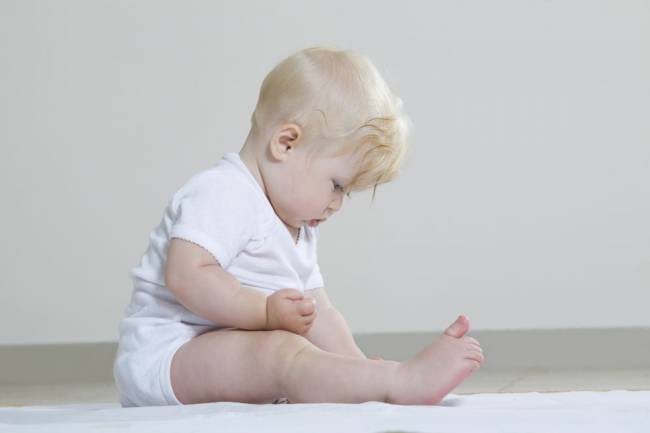 If you and your partner have decided to bottle feed your baby, you probably want to know all about what you need and how to do it. So read on for some useful information and tips!
If you and your partner have decided to bottle feed your baby, you probably want to know all about what you need and how to do it. So read on for some useful information and tips!
- What do I need?
- Bottles
- Teats
- A bottle brush (to wash your bottles)
- And a way of sterilising your equipment.
Tip: when choosing bottles and teats, don’t stock up on a huge amount of the same ones, just in case you or your baby don’t agree with them. If your baby is very messy when feeding from the bottle, it may be worth trying another type or simply experimenting with a different teat. Try a couple of different ones, and see what suits you and your baby best.
A word on teats: teats come in different sizes! If your baby is taking too long to empty a bottle and is getting frustrated, you may need to increase the size (or opening) of the teat. If, on the other hand, the baby is drinking the milk too fast and getting upset about it, it could mean that the opening of the teat is too big for your baby at that point in time, so you may need to go back to a smaller one.
Sterilising
Sterilising is a very important part of bottle feeding because young babies are more susceptible to germs, and milk is the perfect medium where germs can multiply – by sterilising you ensure that germs are destroyed. If a bottle isn’t completely clean when you fill it up with milk, any bacteria that it contains will start multiplying at such rate that by the time you give the feed to your baby there could be enough bacteria in the feed to give your baby a tummy upset!
Top 7 tips to keep your baby’s feeds bacteria-free:
- Use the sterilised equipment as soon as it’s been sterilised
- Wash your hands thoroughly before handling the sterilised bottles and teats
- Make the feed up on a clean surface
- Don’t make feeds in advance – prepare the bottle when it’s needed
- Discard any unused milk after the feed
- Wash bottles and teats thoroughly after use and before sterilising again
- Washing items in the dishwasher doesn’t replace sterilising as dishwashers in the UK don’t wash at high enough temperatures. If you wash in the dishwasher make sure you sterilise afterwards.
There are 4 ways of sterilising, and whichever one you choose is completely dependent on your needs as a family:
- Steam sterilisers – this has probably become the most popular method nowadays, as it’s quick and easy (approx. 10 mins), and no chemicals are involved.
- Microwave sterilisers – they work in the same way as the steam sterilisers but need a microwave to operate them.
- Sterilising solution (the soaking method) – for this you use a non-metallic container, fill it with ordinary tap water and a measure of sterilising solution and leave to soak for a minimum of 2 hours. Here you are using chemicals, which can be tough on your hands, and remember that the solution needs to be changed every 24 hours.
- The boiling method – if you don’t want to invest in a steriliser or if you don’t bottle feed very often, you can immerse bottles and teats in water and boil for at least 10 minutes. The items then remain sterile for as long as you keep them in water with the lid of the saucepan on.
Which milk should I get?
If you’re feeding your baby formula milk (and not expressed milk) in the bottle speak to your midwife, health visitor or GP about what milk they would recommend for your baby’s age, size and situation.
Tip: If you find that your baby doesn’t agree with the formula that you have chosen, becomes ‘mucusy’, is sick quite a lot or doesn’t drink too much, consider getting them checked out by your GP to ensure that the symptoms aren’t caused by anything else.
Some milk facts…
- Formula milk is usually made from cow’s milk that has been treated to make it suitable for babies – if your baby has an allergy or intolerance to dairy, your GP will be able to prescribe you a hypoallergenic brand, but make sure you don’t switch to that without medical advice.
- Infant formula comes in tins of powdered milk (which is the most economical option), or in ready-made cartons where the milk is in liquid form and can just be poured directly into a bottle and fed to the baby. If you buy the tins, each one comes with a set of clear instructions to make the feeds up and with a chart with feeding guidelines (this tells you how much roughly your baby should drink, based on their age and weight).
When choosing your baby’s infant formula, remember:
- To always make sure that the formula that you feed your baby is appropriate for their age;
- That milk that isn’t branded specifically for babies isn’t suitable for them – rice, oats, almonds, cow’s milk, condensed milk etc. are not suitable drinks for your baby.
- To be wary of milk that is marketed for ‘hungry babies’ – this milk isn’t any more fattening that other formula milk. It is just harder to digest and therefore stays in baby’s stomach for longer, keeping them satisfied for a slightly longer period of time.
Top 7 tips for feeding your baby:
- Try and find somewhere comfortable where giving the feed so that you can feel relaxed and enjoy.
- Before you start the feed, make sure, if you haven’t already, that the milk is at the right temperature, and not too hot for baby’s delicate palate.
- Once you’re ready to go, make sure baby is well supported (always remember to support the head and neck) and slightly upright.
- Hold the bottle in such a way that the teat is always completely filled with milk, so that baby doesn’t take in too much air.
- Remember to tune into your baby – use the feed as a great opportunity for spending some time together, bonding and getting to know each other. Look into their eyes, let them look at your face and explore it with their hands if they want.
- Focus on their expressions and body language, and if you feel that your baby needs a break, let them take it. Try and burp them, and then perhaps offer the rest of the milk – they will let you know if they want to continue with the feed.
- Never leave the baby along with the bottle as this is a choking hazard!
What is ‘feeding on demand’ or ‘baby-led feeding’?
- Feeding on demand isn’t just something that applies to breastfed babies. When your baby is bottle fed it’s equally important to make sure that you feed the baby when they’re hungry, rather than waiting a set number of hours.
- Try not to worry too much if your baby isn’t drinking the amount of milk that they should drink according to the tin – the formula companies will give you generic guidelines, but how much your baby drinks depends on other factors as well. Your baby is an individual, and like with us, their appetite will vary, so he or she might not feed in the same way all the time!
- As long as your baby is generally well and picking up weight, let them feed as long or as little as they need to.
- As with breastfed babies, remember that it’s quite normal for newborn babies to feed little and often. As they get older they’ll probably feed more in one sitting and go a bit longer between feeds.
- If you’re ever concerned about your baby and how much milk they are drinking, speak to your midwife, health visitor or GP for advice or reassurance.
‘Combine feeding’ your baby
- There’s nothing wrong with choosing to feed your baby a combination of breast milk and formula milk, known as ‘combined’ or ‘mixed’ feeding.
- The only thing to bear in mind is that breastfeeding works on a supply-demand basis, so the more breastmilk your baby drinks, the more milk mum will make for them. If your baby is having a large (or increasing) amount of formula milk every day, unless your partner expresses milk on a regular basis, the amount of breastmilk available for the baby will reduce. If you want to continue to combine-feed your baby, you can help your partner to do this by suggesting that your baby feeds from the breast as often as possible or that your partner expresses breastmilk as often as appropriate.
- Remember that, if you want breastfeeding to be successful, it is advisable not to introduce a bottle (of breast milk or formula milk) until the breastfeeding relationship is well established. If bottle feeds are given too often and too early, you may find that your baby finds it a lot easier to feed from the bottle than from the breast.
And as a final TIP: Remember that for any concerns on feeding your baby, you should contact your midwife, health visitor or GP.








